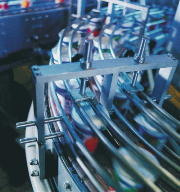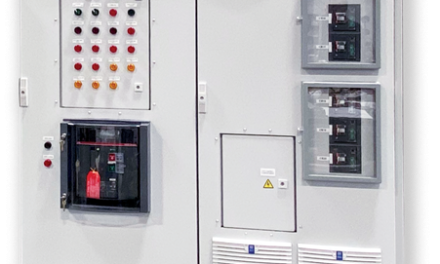 In the first of a new series in Energy Management magazine, Steve Barker, head of Energy Efficiency and Environmental Care, Siemens Industry Sector UK, answers some commonly posed questions affecting energy management issues. In this issue he provides the answers on how to implement cost effective energy efficiency solutions
In the first of a new series in Energy Management magazine, Steve Barker, head of Energy Efficiency and Environmental Care, Siemens Industry Sector UK, answers some commonly posed questions affecting energy management issues. In this issue he provides the answers on how to implement cost effective energy efficiency solutions
The question of how a company can implement cost effective energy efficiency solutions is one I come across a lot in my dealings with companies in many sectors. Before looking at some detail it is important to note a couple of key factors. Energy efficiency is a real business issue and will continue to be so, particularly when set in the context of predicted energy price rises of up to 50% or more over the next five years.
Add to this scenario the business risks associated with policies such as carbon pricing and the potential for energy shortages and energy security concerns, and it would seem appropriate for shareholders and stakeholders to be increasingly tasking management teams with the need to address ongoing energy efficiency and management issues.
In answering the question, the most important point to make is that energy efficiency measures do not need to be expensive, and indeed, such solutions are probably among the best financial investments organisations can make in the current challenging economic climate. Most organisations can save 20-30% of their energy consumption using measures that payback within around three years.
 Where to begin?
Where to begin?
Start by implementing a straightforward but systematic approach to the whole area of understanding and taking energy efficiency measures. Such a plan can quickly identify many of the ‘no cost/low cost’ type of activities that companies can easily tackle, whilst incurring little or no upfront expense.
In terms of considering the cost of items, the best approach is to ensure your company reviews all the associated business aspects that cover this area from a holistic standpoint. This could include looking at the lifecycle costs over a timescale that is appropriate to the proposed energy efficiency technology in question, reviewing maintenance as well as energy costs, factoring in the cost benefit of improved reliability and reduced production down-time, considering different price models over time such as low/medium/high price assumptions, as well as examining other benefits, for instance reduced Carbon Reduction Commitment (CRC) payments in the future.
Rapid ROI
It is a reality that some high energy efficiency solutions can initially be more expensive. However, the important point to remember is the resulting and often dramatic reduction in operating costs which will provide a fast ‘payback’ to the business. Good examples are high efficiency motors, variable speed drives and lighting, where the purchase cost may be only one percent of the lifecycle cost. With variable speed drives for example, the payback period rarely exceeds one year, including all associated installation costs.
Managers should also examine the best and most beneficial way to finance energy efficiency projects. A number of finance models are readily available to assist in implementing projects without any capital investment and simultaneously deliver positive cash flow contributions from day one.
So, consider energy efficiency from a wide ranging business perspective, apply a systematic approach to identifying the key areas of prime benefit, seek quick payback solutions and look to finance your chosen solutions in the most beneficial manner. This combination will lay the foundation for your company to reduce the business risks associated with a volatile and increasingly expensive energy market and drive efficiencies and cost saving through to the bottom line – all without breaking the bank.



